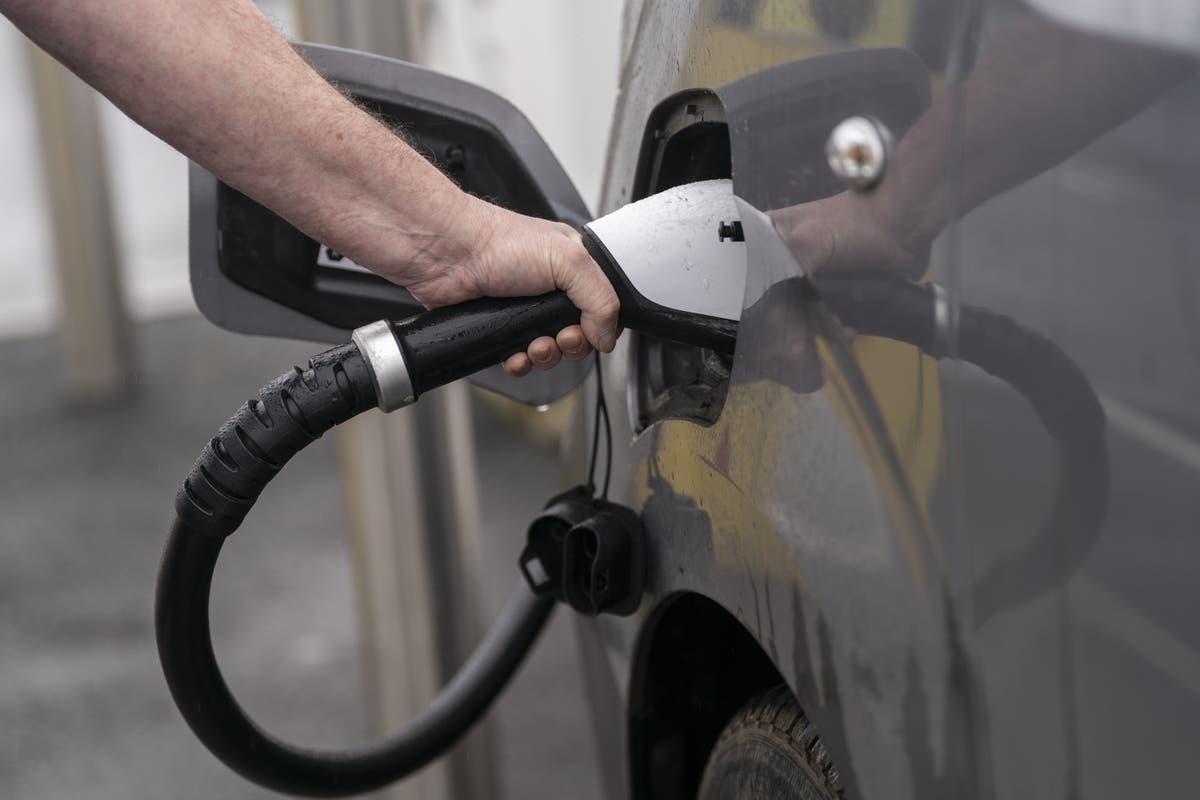
Your support helps us to tell the story
From reproductive rights to climate change to Big Tech, The Independent is on the ground when the story is developing. Whether it’s investigating the financials of Elon Musk’s pro-Trump PAC or producing our latest documentary, ‘The A Word’, which shines a light on the American women fighting for reproductive rights, we know how important it is to parse out the facts from the messaging.
At such a critical moment in US history, we need reporters on the ground. Your donation allows us to keep sending journalists to speak to both sides of the story.
The Independent is trusted by Americans across the entire political spectrum. And unlike many other quality news outlets, we choose not to lock Americans out of our reporting and analysis with paywalls. We believe quality journalism should be available to everyone, paid for by those who can afford it.
Your support makes all the difference.
Electric cars need to be charged, and compared to petrol pumps, public chargers are fewer in number and need a longer stop to do their jobs.
But concerns about electric cars running out of charge and breaking down have been overplayed, according to data from the AA.
The latest statistics show that just 1.85 per cent of all callouts in 2024 for the AA were related to flat batteries for electric cars – down from 2.26 per cent of callouts last year.
While 2 in 5 drivers worry about the risk of breaking down with no charge, it affects a very small amount of motorists, the data suggests.
The AA attends about 8,000 breakdowns a day, it said. When they are called out for a flat battery, often the real reason is the car won’t charge.
Most breakdowns are for faults common to both petrol and electric cars, the organisation said, like tyres or 12-volt battery problems.
Breakdowns due to empty batteries have been declining since 2015, when 8 per cent of callouts were due to depleted cells.
Since then, more chargers and cars with better range have helped aid drivers in avoiding breaking down from low charge.
The AA said 1 per cent of callouts are for combustion cars running on petrol and diesel running out of fuel, and that eventually, low-charge callous will drop to this figure.
Edmund King, AA president, said: “The AA’s latest figures show that less than 2 per cent of EV breakdowns are for ‘out of charge’ which suggests range anxiety should be a thing of the past.
“Many of the ‘out of charge’ breakdowns aren’t on zero charge but are either low on charge or experiencing technical problems such as the vehicle charge point covers sticking.
“In the last eight years the proportion of EVs running out of charge has dropped by about 80% which is due to an increase in the number of chargers and their reliability; better charge post support for customers; improved range on newer EVs; and better driver education and information.”
The UK now has almost 1m electric car chargers, helping keep pace with drivers’ needs, although the car industry is still keen on the rollout of more, and faster models.
Most of the chargers were fitted in homes, however, with only 65,000 open to the public, according to Zapmap.
Even so, broken chargers and high fees are often reported as a frustration for electric car drivers.
Private charging companies can charge what they like, and have to add VAT to their prices, which can lead to big differences in price per kilowatt hour.
Most electric car buyers are companies operating fleets, or homeowners with off-street parking who can cheaply charge their cars themselves.
For mass take-up of the cars, cheap public charging will be needed, the car industry has warned.


